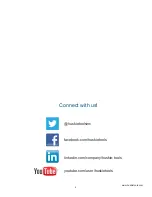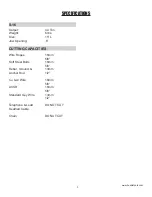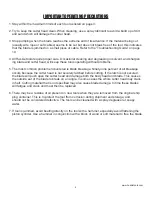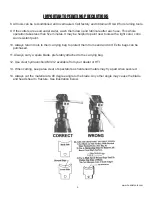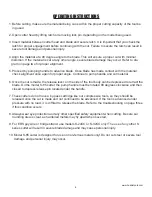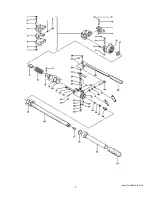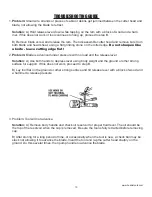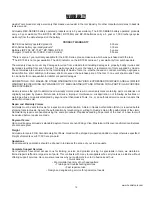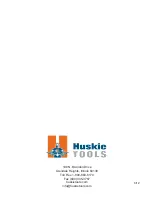
www.huskietools.com
4
IMPORTANT OPERATING PRECAUTIONS
1. Stay within the maximum limits of each tool as listed on page 3.
2. Try to keep the cutter head clean. When cleaning, use a spray lubricant to avoid a build up of dirt
and sand which will damage the cutter head.
3. Stop pumping when the blade reaches the extreme end of its advance. If the material being cut
(usually wire rope or soft cables) seems to be cut but does not break free of the tool, this indicates
that the blade is jammed on a small piece of cable. Refer to the “Troubleshooting Guide” on page
10.
4. All Huskie tools require proper care. Occasional cleaning and degreasing in solvent, and sharpen
ing blade and cutter head, will keep these tools operating without problems.
5. The most common problem encountered is blade breakage. Ninety-nine percent of all breakage
occurs because the cutter head is not securely latched before cutting. If the latch is not secured,
the blade will push open the cutter head and damage both the body head and blade. This causes
the outside ear of the blade to break on an angle. In some cases the whole cutter head may crack
in half. Cutting material that is not specified may also cause blade damage. In time these blades
will fatigue and crack and must then be replaced.
6. There may be a residue of oil present on new tools when they are removed from the original ship
ping container. This is to protect the tool from corrosion during shipment and storage, and
should not be considered defective. The tool can be cleaned with a spray degreaser or soapy
water.
7. If tool is jammed, avoid beating directly on the tool with a hammer, especially avoid flattening the
piston cylinder. Use a hammer in conjunction with a block of wood or soft material to free the blade.


